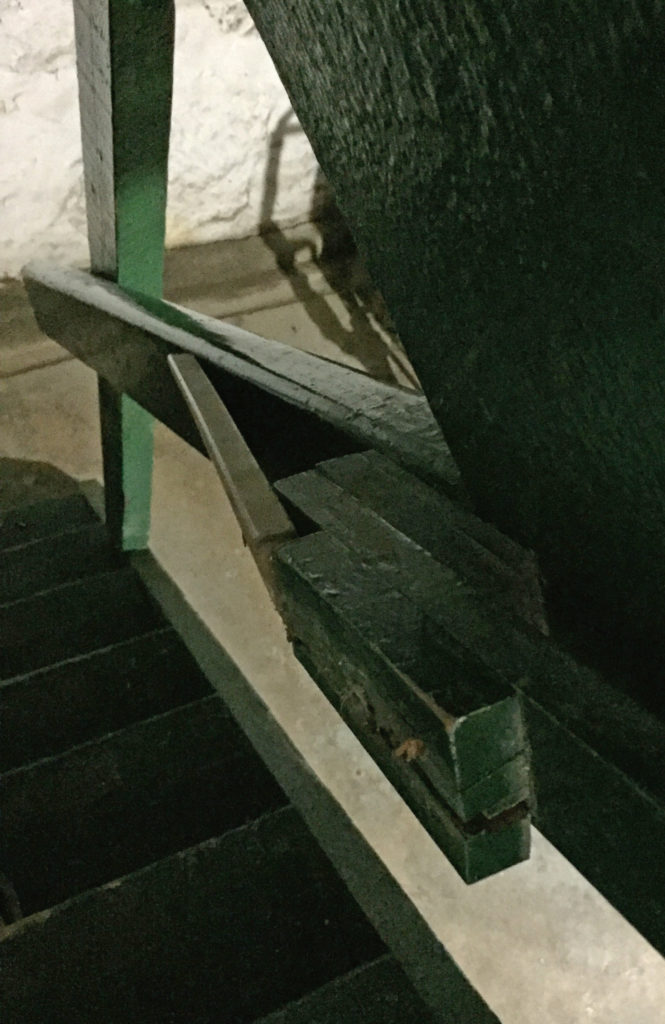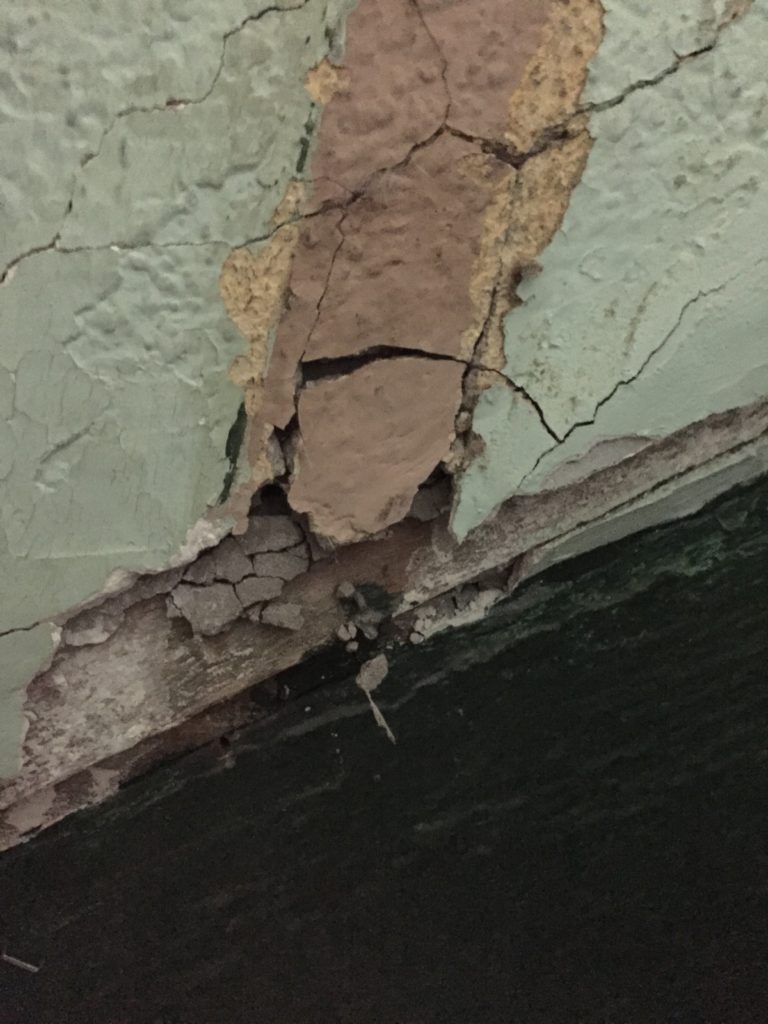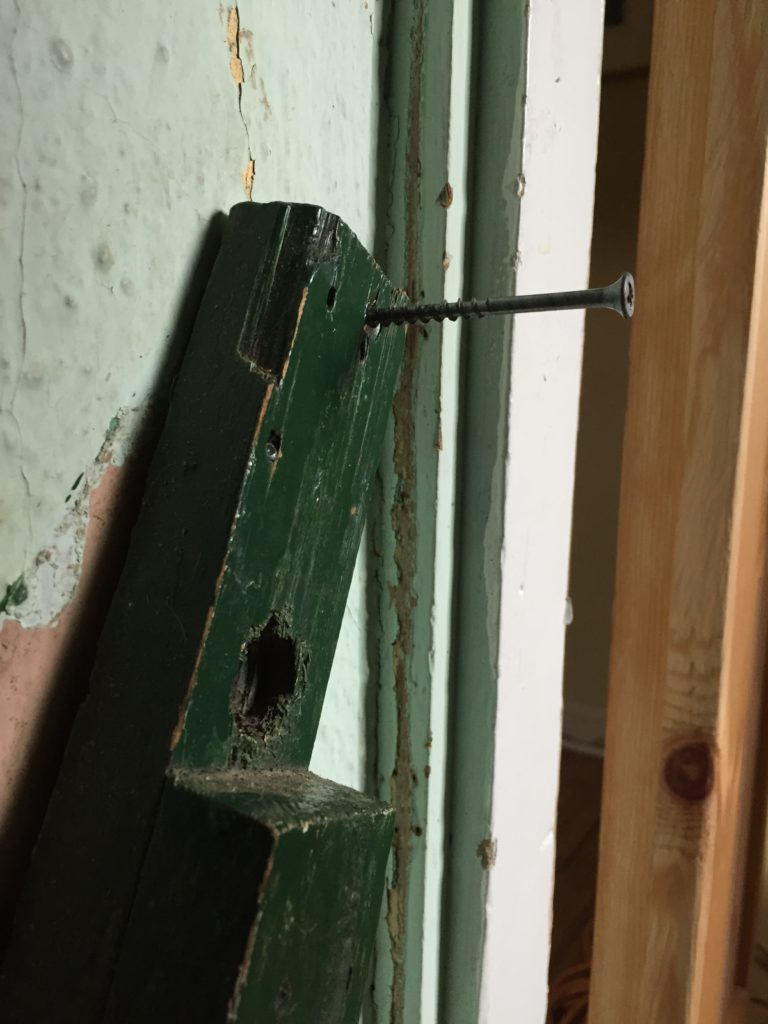For twelve years we simply lived with the “small” issues of our home. We do have intentions to repair these issues. For example, one issue happened when it rained. We did not like having a stream flow from one corner of the room to another, so we fixed it. Some issues just appear to be a pending disaster but as long as it works, why fix it. You just keep working with it; adapting and compromising to your environment; working for the issue instead of the issue working for you.
One issue wanted attention.
Let’s just go with this assumption that back in 1918 that handrails for basement stairs was not a requirement. As the years go by, certain construction process and materials need to be made to meet new standards—you know those rules when construction codes have been updated to new safety standards to keep your environments from killing you. Before you sell your home, some codes need to be met. A previous owner decided that this construction was the appropriate solution to meet one of those requirements: all stairs need a handrail.
This handrail was a broom handle fastened to two blocks fastened to a 1×2 board fastened to the wall with a screw and some nails. It was a little wobbly and bowed under any applied weight. But we lived with it.
When you cut corners, corners can cut you. The handrail decided it had done its service and wanted out. Literally, it came out of the wall.
That is fine, because such an issue means that the intended renovation in the list of update wishes moves from the sometime-in-the-future placement in the queue to the immediate repair—stat.
I needed no tools to remove the broomstick hand rail.
This is the rail further down the stairs sans the broomstick.
Did you see the block on block on block to attach the rail to the other rail below the floor level? How about that nice little board wedged in to make that nice transition? That board, come to find out, was a baseboard moulding attached by two nails—one at each end.
The story continues
I want to remove this interesting assembly from the wall but I did not see any evidence of the appropriate fastener or commonly known as a screw. Could it be under that first block? That thing was not budging but the plaster wall was. Curious.
Without a tool, I grabbed the three blocks and easily pulled this end out of the wall. This thing disconnected from the wall as if it was a…… . .. . .. . .. The proud installer used finishing nails. Finishing nails have very tiny heads so they sink below the surface allowing a person to create a smooth almost uninterrupted wood surface. You use them to attach wood to wood and have a surface that can be stained or painted with hardly any evidence of a fastener. You do not use them to attach a piece of wood to plaster. The result was this mess.
Banging into plaster weakens its hold onto the lathe, plus the plaster tends to shatter like oh I don’t know ceramic.
The handle base was still attached back at the top by that single screw that I could see which led me to believe that that same technique was used for the entire project. The screw was long.
Okay, maybe the installer was doing something right. I took out the three inch screw. Pretty modern looking and free of any oxidation. I am betting that the immediate previous owners put this one in to “fix” the issue. Removing the final tendon of this disaster, I saw that the screw was simply twisted into the empty plaster wall. It was not correctly installed in a stud nor in an anchor. Whatever…demo done, it was time to fix.
This is the result of my fix:
I used seven pieces of black steel pipes, elbows and flanges—the same stuff for that rustic industrial trendy furniture and shelves. (Yes, I did make a shelf, two desks and a sideboard but don’t call me trendy.) I fastened this sturdy, unyielding handrail to the wall with screws using anchors. You cannot use the plastic or lead anchors in plaster walls. Plaster crumbles and gives over time. You need to use what I call the butterfly anchors or correctly identified as toggle bolts. Toggle bolts apply and spread pressure behind the wall reducing the stress on the hole caused by the fastener.
For the bottom portion, the rail attaches securing with a direct transition into the rail below.
Now, an issue for later is that crumbling plaster caused by the previous handrail.








